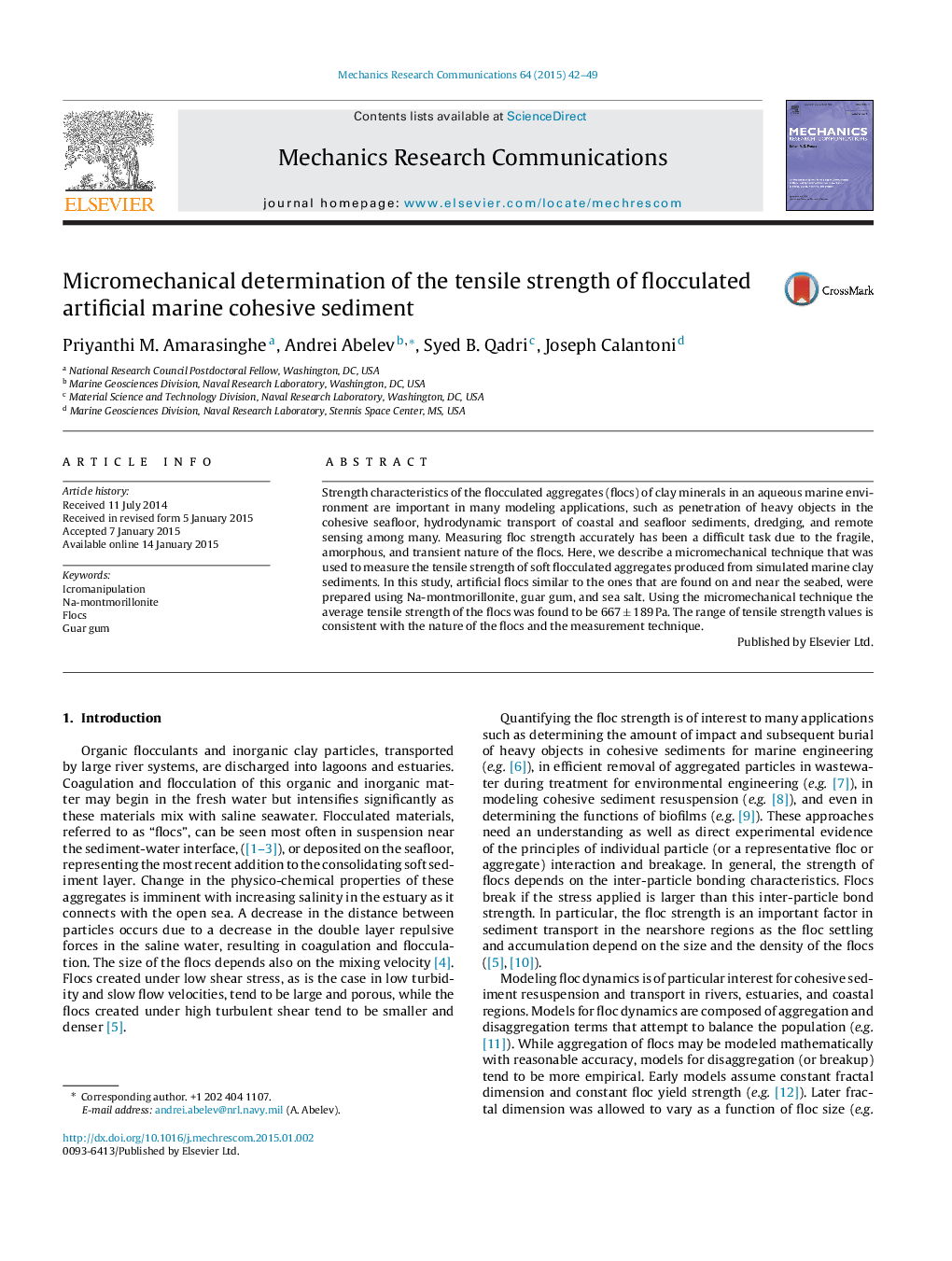| Article ID | Journal | Published Year | Pages | File Type |
|---|---|---|---|---|
| 799058 | Mechanics Research Communications | 2015 | 8 Pages |
•New micromanipulation method was employed to study the tensile strength of lab-synthesized clay-organic marine flocs.•Flocs were manipulated, loaded in tension, and fractured, using two micro pipettes.•Deflection of the micro pipette was measured optically, mechanically calibrated, and correlated with the force needed for floc breakage.
Strength characteristics of the flocculated aggregates (flocs) of clay minerals in an aqueous marine environment are important in many modeling applications, such as penetration of heavy objects in the cohesive seafloor, hydrodynamic transport of coastal and seafloor sediments, dredging, and remote sensing among many. Measuring floc strength accurately has been a difficult task due to the fragile, amorphous, and transient nature of the flocs. Here, we describe a micromechanical technique that was used to measure the tensile strength of soft flocculated aggregates produced from simulated marine clay sediments. In this study, artificial flocs similar to the ones that are found on and near the seabed, were prepared using Na-montmorillonite, guar gum, and sea salt. Using the micromechanical technique the average tensile strength of the flocs was found to be 667 ± 189 Pa. The range of tensile strength values is consistent with the nature of the flocs and the measurement technique.
Graphical abstractFigure optionsDownload full-size imageDownload as PowerPoint slide
